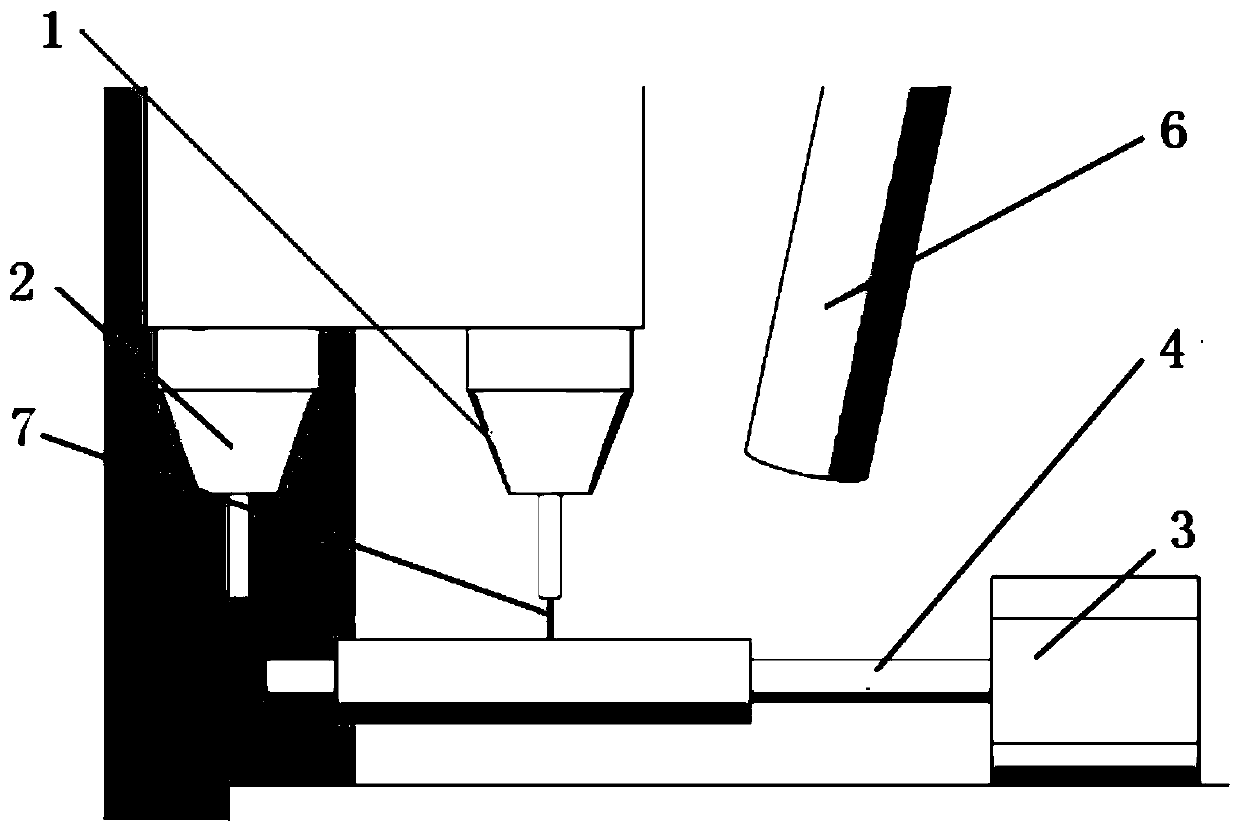A kind of preparation method of biotype multilayer nerve conduit containing mesenchymal stem cells
A nerve conduit and mesenchymal stem cell technology, applied in the design and preparation of nerve conduits, can solve problems such as uncontrollable and unavailable nerve conduits, and achieve the effects of short time consumption, enhanced safety, and mild operating conditions
- Summary
- Abstract
- Description
- Claims
- Application Information
AI Technical Summary
Problems solved by technology
Method used
Image
Examples
Embodiment 1
[0037] Such as figure 1 As shown, a method for preparing a biological multilayer nerve conduit containing mesenchymal stem cells, the specific steps are as follows:
[0038] (1) Weigh a certain mass of sterile GelMA into a 10ml centrifuge tube, dissolve it in PBS solution with 0.1% (w / v) LAP, and prepare 5% (w / v) and 30% (w / v) GelMA biological ink.
[0039] (2) Collect bone marrow mesenchymal stem cells (BMSCs) with cell confluence of 80% or more in the culture dish, digest the cells with 0.25% (w / v) trypsin solution, and then perform centrifugation, after digestion and centrifugation , centrifugation speed 100rpm, centrifugation time 5min. Pour off the supernatant in the centrifuge tube, use the 5% (w / v) GelMA bio-ink prepared in step (1) to resuspend the cells, gently pipette to make the cells evenly distributed in the bio-ink, and the cell density in the bio-ink is 1.0 *10 6 , to obtain 5% (w / v) GelMA bioink loaded with cells.
[0040] (3) Introduce the 5% (w / v) GelMA ...
Embodiment 2
[0048] Same as Example 1, the difference is that in step (1), the concentration of the configured low-concentration GelMA bio-ink is 15%, and other conditions remain unchanged. Prepare 6 double-deck nerve guides and test, the average value of the compression modulus of the inner layer of the nerve guide tube is 250KPa, the average value of the tensile modulus is 37.5KPa; the average value of the outer layer mechanical compression modulus is 700KPa, the tensile modulus The average value is 150KPa.
Embodiment 3
[0050] Same as Example 1, the difference is that in step (4), the two nozzles uniformly select 22G needles (inner diameter 0.413mm), and other conditions remain unchanged, resulting in a length of 50mm, an inner diameter of 3mm, an outer diameter of 4.652mm, and an inner diameter of 4.652mm. An initial double-layer hollow nerve conduit with a layer thickness of 0.413 mm and an outer layer thickness of 0.413 mm.
[0051] The final double-layer nerve guide was obtained after ultraviolet curing, and the mechanical compression and tensile modulus of the inner and outer layers of the obtained double-layer nerve guide were tested. Compared with Example 1, the test results remained basically unchanged.
PUM
| Property | Measurement | Unit |
|---|---|---|
| compressive modulus | aaaaa | aaaaa |
| compressive modulus | aaaaa | aaaaa |
| thickness | aaaaa | aaaaa |
Abstract
Description
Claims
Application Information
 Login to View More
Login to View More - R&D
- Intellectual Property
- Life Sciences
- Materials
- Tech Scout
- Unparalleled Data Quality
- Higher Quality Content
- 60% Fewer Hallucinations
Browse by: Latest US Patents, China's latest patents, Technical Efficacy Thesaurus, Application Domain, Technology Topic, Popular Technical Reports.
© 2025 PatSnap. All rights reserved.Legal|Privacy policy|Modern Slavery Act Transparency Statement|Sitemap|About US| Contact US: help@patsnap.com



